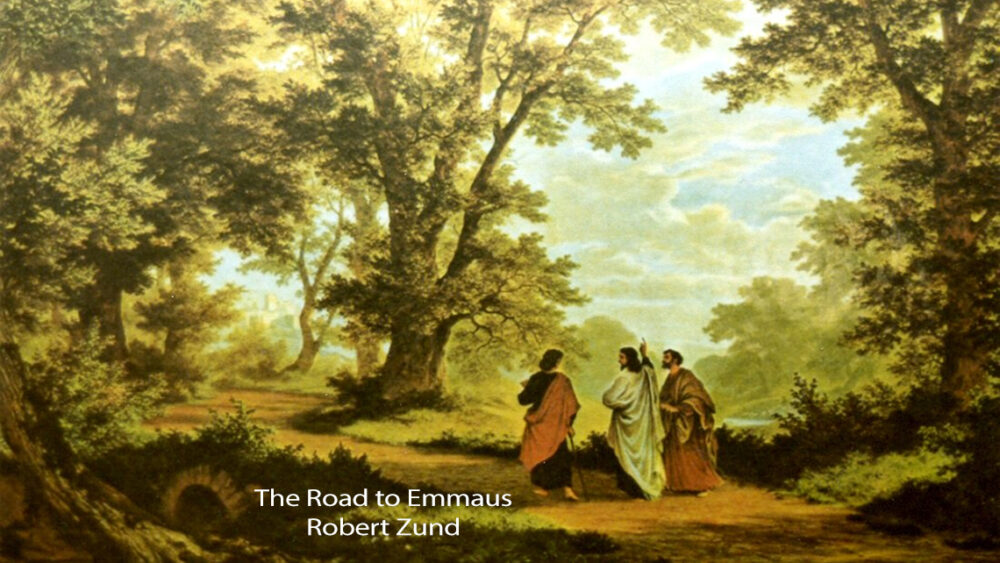The following day, Sunday, marks the beginning of Holy Week, which they call here the Great Week. On this [Palm] Sunday morning, at the completion of those rites which are customarily celebrated at the Anastasis or the Cross from the first cockcrow until dawn, everyone assembles for the liturgy according to custom in the major church, called the Martyrium. It is called the Martyrium because it is on Golgotha, behind the Cross, where the Lord suffered His Passion, and is therefore a shrine of martyrdom. As soon as everything has been celebrated in the major church as usual, but before the dismissal is given, the archdeacon raises his voice and first says: “Throughout this whole week, beginning tomorrow at the ninth hour, let us all gather in the Martyrium, in the major church.” Then he raises his voice a second time, saying: “Today let us all be ready to assemble at the seventh hour at the Eleona.” When the dismissal has been given in the Martyrium or major church, the bishop is led to the accompaniment of hymns to the Anastasis, and there all ceremonies are accomplished which customarily take place every Sunday at the Anastasis [Church of the Holy Sepulcher] following the dismissal from the Martyrium. Then everyone retires home to eat hastily, so that at the beginning of the seventh hour everyone will be ready to assemble in the church on the Eleona, by which I mean the Mount of Olives, where the grotto in which the Lord taught is located.
At the seventh hour all the people go up to the church on the Mount of Olives, that is, to the Eleona. The bishop sits down, hymns and antiphons appropriate to the day and place are sung, and there are likewise readings from the Scriptures. As the ninth hour approaches, they move up, chanting hymns, to the Imbomon, that is, to the place from which the Lord ascended into heaven; and everyone sits down there. When the bishop is present, the people are always commanded to be seated, so that only the deacons remain standing. And there hymns and antiphons proper to the day and place are sung, interspersed with appropriate readings from the Scriptures and prayers.
As the eleventh hour draws near, that particular passage from Scripture is read in which the children bearing palms and branches came forth to meet the Lord, saying: “Blessed is He who comes in the name of the Lord.” The bishop and all the people rise immediately, and then everyone walks down from the top of the Mount of Olives, with the people preceding the bishop and responding continually with “Blessed is He who comes in the name of the Lord” to the hymns and antiphons. All the children who are present here, including those who are not yet able to walk because they are too young and therefore are carried on their parents’ shoulders, all of them bear branches, some carrying palms, others olive branches. And the bishop is led in the same manner as the Lord once was led. From the top of the mountain as far as the city, and from there through the entire city as far as the Anastasis, everyone accompanies the bishop the whole way on foot, and this includes distinguished ladies and men of consequence, reciting the responses all the while; and they move very slowly so that the people will not tire. By the time they arrive at the Anastasis, it is already evening. Once they have arrived there, even though it is evening, vespers is celebrated; then a prayer is said at the Cross and the people are dismissed.
—Egeria, Abbess, Pilgrimage
 On this date in 1865, Good Friday, President Abraham Lincoln was shot and mortally wounded by John Wilkes Booth while watching a performance of Our American Cousin at Ford’s Theater in Washington. He died the next morning.
On this date in 1865, Good Friday, President Abraham Lincoln was shot and mortally wounded by John Wilkes Booth while watching a performance of Our American Cousin at Ford’s Theater in Washington. He died the next morning. On this date in 1912, the British liner RMS Titanic collided with an iceberg in the North Atlantic at 11:40 p.m. ship’s time and began sinking. The ship went under two hours and 40 minutes later with the loss of 1,514 lives.
On this date in 1912, the British liner RMS Titanic collided with an iceberg in the North Atlantic at 11:40 p.m. ship’s time and began sinking. The ship went under two hours and 40 minutes later with the loss of 1,514 lives.


You must be logged in to post a comment.